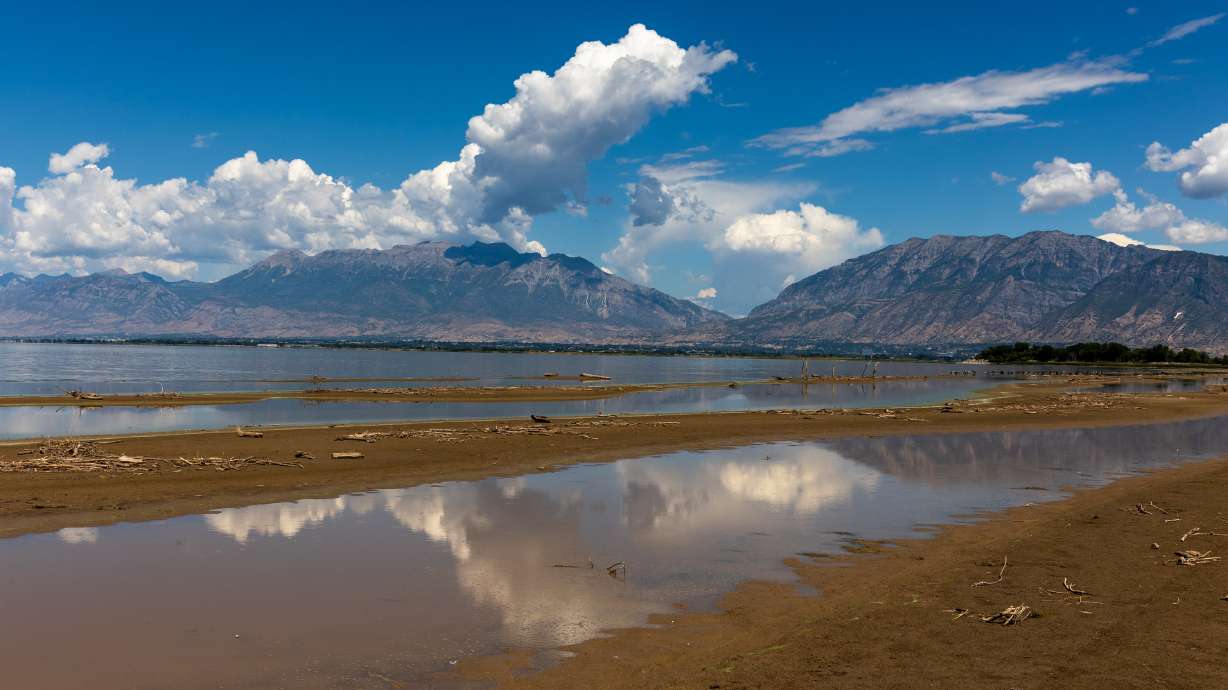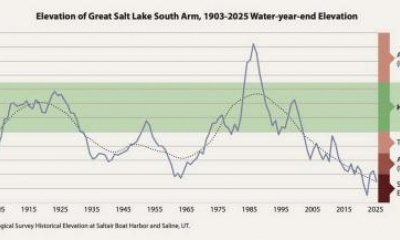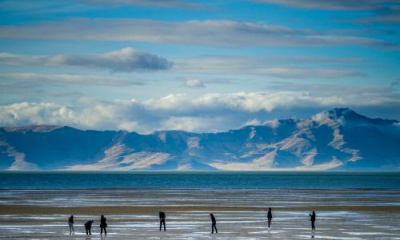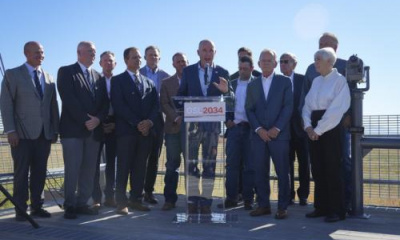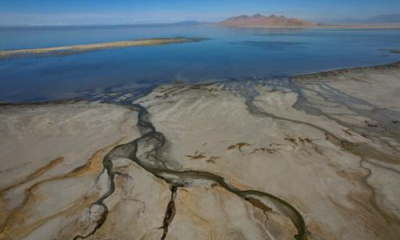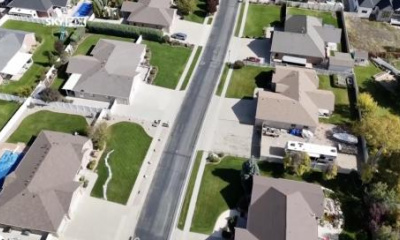SALT LAKE CITY — Utah water managers are set to begin releasing some water from Utah Lake as it reaches maximum capacity for the first time in over a decade, to avoid flooding but also provide the Great Salt Lake with much-needed water.
Utah Lake is at 99.5% capacity, about 20 percentage points above its median average for early February and 48 percentage points above this time last year, according to the Utah Division of Water Resources. More water is expected to flow in when the annual spring snowpack runoff period begins.
State engineer Teresa Wilhelmsen and the Utah Lake Water Users Association announced Wednesday they will coordinate controlled releases beginning Thursday morning to avoid early flooding risks.
Extra water will be released from the control gates located in Saratoga Springs, into the Great Salt Lake via the Jordan River. Wilhelmsen said it's unclear yet how much water will end up in the Great Salt Lake through the efforts. It's a practice set up every time the lake reaches "compromise level," which last happened in 2011.
"Utah Lake is approaching the compromise elevation because water users are storing water from last year while it continues to snow and rain in the watersheds feeding Utah Lake," added Wade Tuft, director of Utah Lake Water Users Association, in a statement.
Great Salt Lake deputy director Tim Davis said Wilhelmsen will measure how much is released and how much ends up in the Great Salt Lake.
A snapshot of Utah's water supply
All signs indicate that Utah Lake won't be the only body of water where controlled releases will be conducted.
Several water management agencies applied similar measures last year as a result of the state's record-breaking snowpack. While this year's snowpack collection hasn't been as strong, a pair of atmospheric rivers that have slammed Utah over the past week have hoisted the statewide snowpack above normal once again.
As of Wednesday morning, Utah's average snowpack is up to 10.5 inches of snow water equivalent, 110% of the median average for this point in the year, per Natural Resources Conservation Service data. Nearly one-fifth of this year's total has come since the start of the month and more precipitation is in the forecast over the next few days.
Meanwhile, Utah's primary reservoirs are already 82% full, about 33 percentage points above where they were this time last year. That means less water is needed to replenish them, so more controlled releases are likely this year in addition to what's happening at Utah Lake.
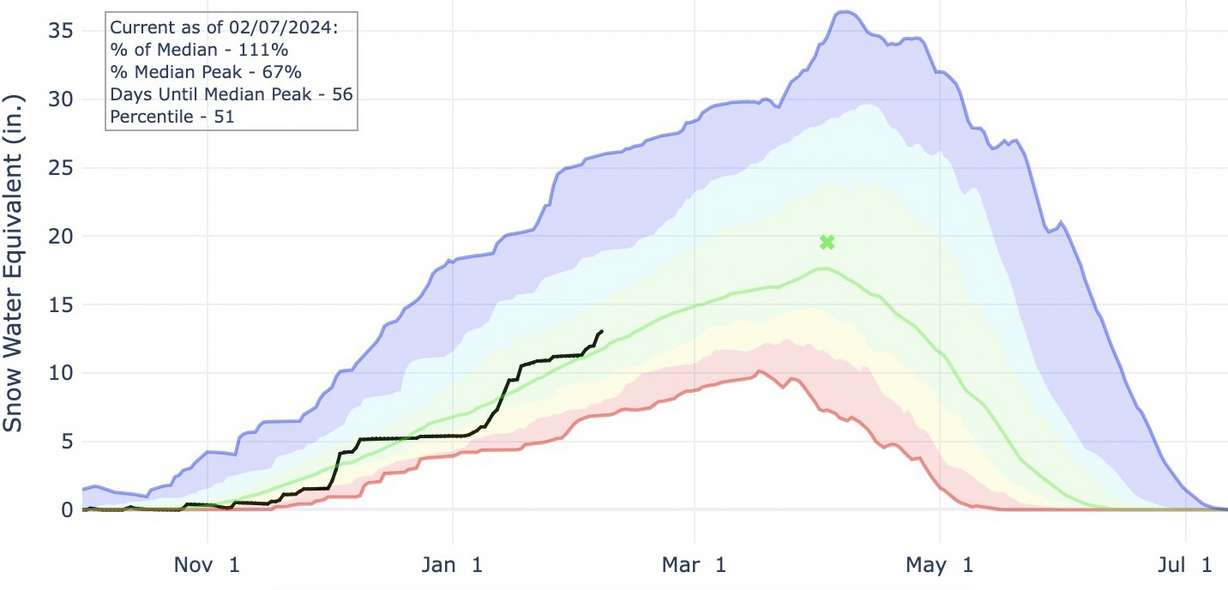
This graph shows snowpack levels within the Great Salt Lake basin as of Wednesday morning. About two-thirds of the basin's annual median average has already been collected this year with about two months left before its average collection peak. (Photo: Natural Resources Conservation Service)
This is especially true for the Great Salt Lake basin.
The snowpack within the entire basin has 13 inches of snow water equivalent, 111% of the median average, as of Wednesday morning. Most of the reservoirs within the basin are listed as being between 61% to 100% full. State researchers also noted last month that they also believe this year's runoff will yield higher streamflows since less will go toward recharging depleted groundwater storage.
More controlled releases expected
It's why Brian Steed, Utah's Great Salt Lake commissioner, says he believes the Great Salt Lake stands to benefit yet again from the predicament water managers are facing. He said he's met with all of the basin's water managers in recent weeks and asked them to send additional water to the lake as their reservoirs fill up, so it can help refill the lake.
"We've asked the operators of the reservoirs in these watersheds, including Utah Lake, that they release early because we know they're going to have to release anyway to accommodate the runoff that will come later in the spring," he said, in a briefing with reporters Wednesday morning.
The districts have been "amenable" to the request, going as far as agreeing to do it, he added. However, it's unclear when those will take place and how much water will end up in the Great Sake Lake.
The commissioner's office has reached out to entities beyond the typical water management agencies, such as Rocky Mountain Power which regulates the gates at Bear Lake, Davis said.
Great Salt Lake's southern arm is already back to 4,193 feet elevation, about a foot below its peak level after last year's snowmelt and 5 feet below its minimum healthy level. Its northern arm is a little less than 8 feet below the healthy level, per the U.S. Geological Survey.
Steed is optimistic about the gains the lake could make in the coming months, noting that any early releases now would be beneficial because the water would arrive in the lake at a time that it won't evaporate right away and the water won't be diverted into flood systems and other infrastructure that would capture the water.
"We're trying to get as much water to the lake as possible this year," he said. "That's really going to be key in wet years like this."

